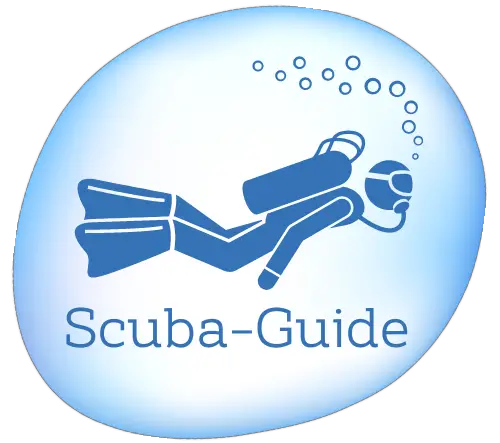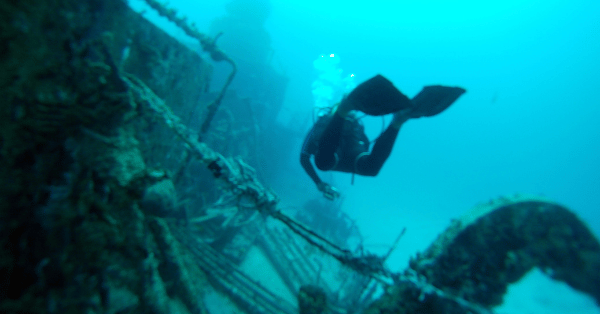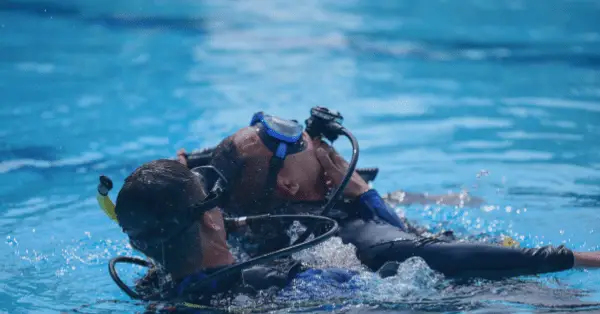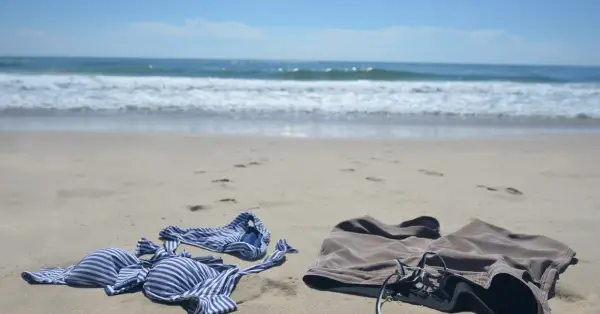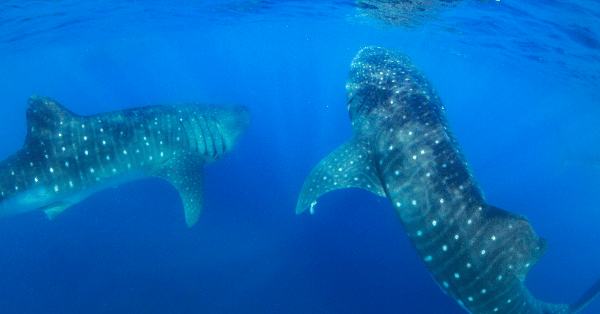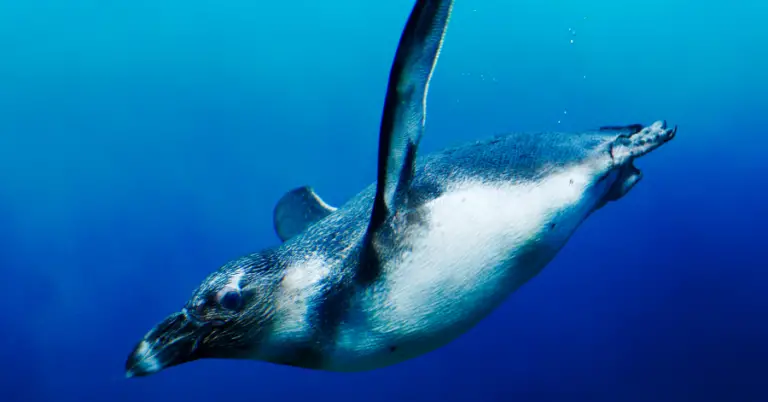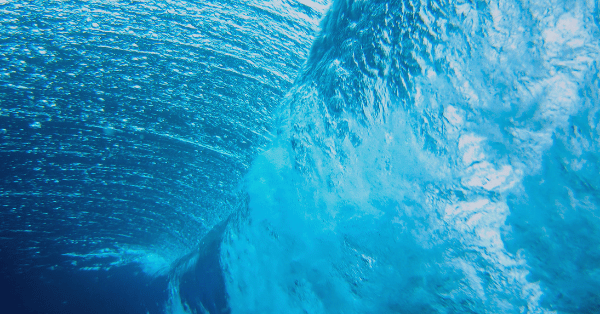Why the Safety Stop Is Essential in Scuba Diving
The safety stop is an essential part of any scuba dive. This procedure helps ensure the safety and health of divers. But what is the safety stop, and why is it so important? Everything divers need to know.
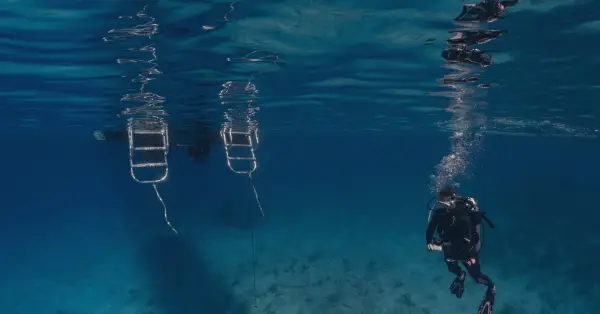
What is the safety stop in scuba diving?
The safety stop is a period of time that divers must take at the end of their dive, usually lasting between three and five minutes. During this time, divers remain at a depth of approximately 15 fee or 5 meters, so they can equalize pressure in their bodies and reduce their risk for decompression sickness. The safety stop also allows divers to check for signs of nitrogen narcosis, oxygen toxicity, and other potential hazards.
During the stop, divers usually stay at the same depth and either stay around the same spot floating around, holding onto a line of descent (at strong underwater currents) or a mooring line that secures the diving boat. On some dives, you may be circling around in shallow areas. The safety stop doesn’t have to be a stop per se. It means to stop ascending at a certain depth for a specific time, neither going down nor up.
Are you bored at the safety stop? Learn how to blow bubble rings.
What is a decompression stop?
As divers ascend from the depths of the sea, it is critical to make a decompression stop. This pause allows their bodies to expel nitrogen that has been dissolved in their blood – something that would otherwise turn into bubbles and cause serious complications like decompression sickness. Deco stops are required for longer and deeper dives.
Decompression vs safety stop in scuba diving
While the scuba diving safety stop is essentially a form of decompression, assuming No Decompression Limits (NDL) were exceeded during the dive, it serves as more of a preventive measure than an absolute requirement. This differs from that which one would encounter on dives requiring mandatory decompression stops.
We all have heard that every square is a rectangle, but not every rectangle is a square. Following this logic, every decompression stop is a safety stop, but not all safety stops are deco stops.
Neglecting to perform a decompression stop can be hazardous and may result in nitrogen bubbling or Decompression Sickness (DCS). A safety stop is usually conducted at 15 feet (5 meters) for around 3-5 minutes, but the length of time one spends on their decompression stops depends upon both the depth they’ve reached as well as how much time was spent there. Therefore, it’s important that divers complete both a Deco Stop and Safety Stop at 15 feet (5m) prior to surfacing.
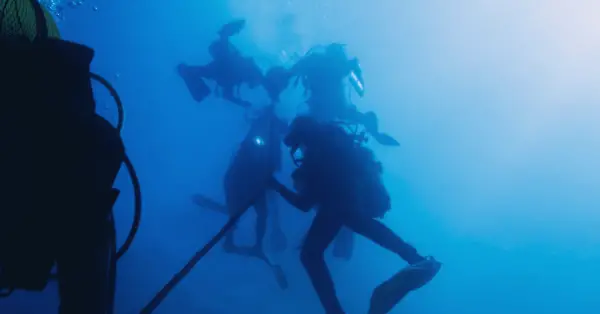
Why is the safety stop essential?
The safety stop is an essential part of any scuba dive because it helps reduce the risk of decompression sickness. Decompression sickness occurs when a diver ascends too fast after a deep dive and can result in serious neurological or pulmonary issues. By stopping at a shallow depth for several minutes, divers are able to avoid this potentially life-threatening condition.
How long should the safety stop be?
Most safety stops should last between three and five minutes. The time depends on the depth of the dive and bottom time. When planning your dive, you can use different methods and technologies to determine the length of the required safety stop.
Generally, for any dive that reaches 100ft or deeper, as well as all dives coming up to within 3 pressure groups of a no-decompression limit, Safety Stops mandate a pause at 15 feet for three minutes. This is essential in order to ensure the safety and well-being of all divers involved.
In the event of an emergency decompression, if a no-decompression limit is exceeded by up to 5 minutes, it’s essential that divers complete an 8-minute stop at 15ft and remain out of the water for 6 hours before diving again. If more than five minutes are surpassed in this situation, then a 15ft recompression with fifteen or more minutes is highly recommended (depending on the air supply). After surfacing from either case mentioned above, you must avoid submerging yourself into the water once more for 24 hours.
Safety stop diving table – RDP table
When conducting your SSI or PADI open water certification, you will learn (or have learned) how to plan your dive or multiple dives with the help of an RDP table. The Recreational Dive Planner table shows your dive time on one axes and bottom time on the other. Bottom time is actually the combined dive time: time to reach the bottom, time to stay at the maximum depth, and time it takes to ascend to the surface including your safety stop.
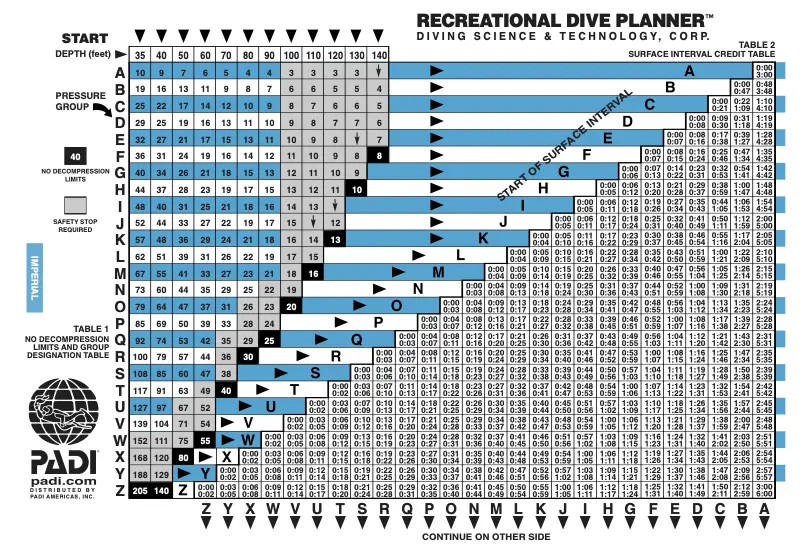
The grey boxes indicate that you need to perform a safety stop. For example, if you are planning a dive down to a depth of 90 feet for more than 22 minutes, it requires a 3-minute safety stop.
Even though regarding this RDP planning chart a safety stop may not be required, in recreational scuba diving we will conduct a safety stop every time we scuba dive for 3 to 5 minutes at a depth of 15 feet.
Determine the safety stop length with a smartphone app
There are many smartphone apps and websites that can you help you plan your dives, safety stop, and surface interval times. This is not a review of those apps, but some common ones are iDeco Pro or V-Planner.
Using your dive computer
Most dive computers allow users to plan their dive with a planning mode. Often this also comes with an app for easier navigation.
Additionally, dive computers show you in real-time underwater how long you need to stop and usually count down the remaining safety stop time. They usually also alert divers when they ascend too fast.
Lastly, they keep track and inform divers of their required surface interval and no flight time.
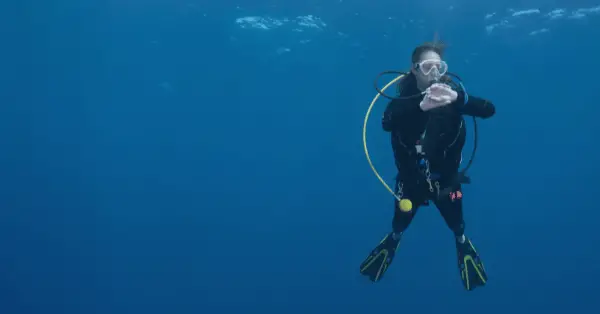
How slowly should I ascent?
How fast someone is ascending is measured in the rate of ascent. Regarding PADI, the maximum rate of ascent is 60 feet (18 meters) per minute for dives deeper than 60 feet. For shallower dives, the fastest suggested rate is 30 feet (9 meters) per minute. Most dive computers, however, will alert you way sooner.
Besides maintaining a safe ascent rate, it’s also crucial to be able to control the final ascent. Uncontrolled ascents can accelerate due to the pressure changes causing the remaining air in the diver’s BCD and tank to expand.
If remaining air pressure levels allow, ascend as slowly and controlled as possible. And never hold your breath, so the air won’t expand in your lungs.
Safety stop at higher altitudes
A safety stop at diving altitudes of 8000 feet or greater, a safety stop is always required. The required surface interval will expand and it’s recommended to limit your dives to a maximum of two within 24 hours.
Higher altitudes have a higher pressure level and therefore impact your nitrogen levels. In essence, the greater the altitude, the slower absorbed nitrogen can leave the body.
What are the signs of decompression sickness?
There are a variety of signs and symptoms associated with decompression sickness, including:
- Nausea
- Dizziness
- Headache
- Shortness of breath
- Paralysis
- Joint pain
